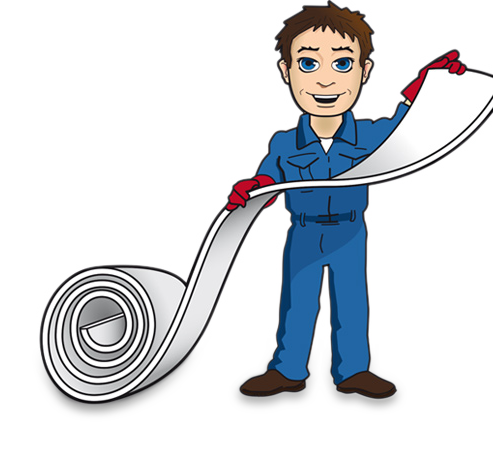Introduction
ECFIA recognises that there is a need to recommend good working practices to maintain control of fibrous dust concentrations in the workplace, not only for classified fibres but also for those that are not classified. Uncontrolled levels of fibrous dusts of any kind can lead to mechanical irritation and cause worker discomfort. Good hygiene practices and adequate engineered dust controls will improve the general conditions within the working environment and minimise the opportunity for both primary and secondary dust exposure, the latter resulting from a build up of dust in the workplace.
A number of countries within the EU have Occupational Exposure Limits (OELs) for the various types of fibrous dust; e.g. man made mineral fibres, which includes AES fibres, refractory ceramic fibres (ASW/RCF) and polycrystalline fibres. This means that there is a regulatory requirement to introduce controls that are sufficient to bring workplace concentrations below the relevant OELs.
Exposure Control Measures
Control measures are generally a combination of engineered solutions and working practises to eliminate or reduce exposure. Selecting the right combination is very important and such measures will only work effectively if they are used correctly.
When looking at dust extraction equipment, the closer it is to the source of dust generation the more effective it will be. The least effective form of dust control is the use of respiratory protective equipment (RPE), whereby the dust generation is left uncontrolled and the worker wears respiratory protection to minimise their exposure.
It is generally recognised that personal protective equipment (PPE), including RPE, should be seen as a last resort and wherever practical other control measures should be implemented to minimise the opportunity for fibrous dust to enter the atmosphere where the individual is working.
The measures recommended by ECFIA can be applied to all fibre types; however, the level of control will differ depending on the fibre type, based on the classification of the material and the relevant OELs.
For example, when using ASW/RCF, as it is classified as a carcinogen (category 1b) within the EU the possibility of substituting with a less hazardous substance should be considered as a first step. If this is not possible then other control measures will need to be implemented to control the workplace dust.
Control measures include engineered controls to reduce dust emissions at source, and workplace practices to minimise handling and reduce secondary dust exposure. There is some overlap between these two approaches; for example, minimising the handling of fibrous materials during a process may require both engineering controls in terms of handling aids, and workplace practice controls in terms of operating procedures to ensure workers are using the equipment correctly.
For more detailed information see the ECFIA series of guidance documents which deal with specific types of dust control. These are available for free download in ECFIA’s CARE Guidance section.
GENERIC HANDLING ADVICE
High Temperature Insulation Wool (HTIW) products should be limited to professional use in well-organised workplaces. Statutory or other applicable exposure limit values for HTIW dust need to be observed and exposure shall be reduced to as low a level as is technically possible. Please check your local and national regulations and exposure limits before working with HTIW.
Working Habits
All operators should be informed about health and safety aspects related to the use of HTIW, including training in safe handling and proper use of control measures. Training and information should be given before employment and updated as necessary.
Work Clothes
Operators should be provided with clothing specifically for use in their working area. Working clothing should be long-sleeved; tight cuffs or collars should be avoided as they can cause irritation by rubbing fibres into the skin.
Personal protective equipment
If needed, provide appropriate protective equipment and train operators to fit and use it properly.
Organisation of work
Where dust emission cannot be avoided minimise dust exposure. Use processes, operating procedures and products which will limit workers exposure to fibrous dust.
Personal protective equipment
If needed, provide appropriate protective equipment and train operators to fit and use it properly.
Organisation of work
Where dust emission cannot be avoided minimise dust exposure. Use processes, operating procedures and products which will limit workers exposure to fibrous dust.
Technical Measures
Handling should be carried out under controlled conditions. Extraction and ventilation should be introduced to prevent dust dispersion.
Housekeeping
Good hygiene practices should be implemented. The housekeeping programme should be planned to include systematic cleaning and should result in a clean and orderly work environment. Cleaning should be carried out with a vacuum cleaner or alternatively by wet sweeping. Avoid dry brushing. Compressed air should not be used.
Waste Disposal
Handle, collect and dispose of scrap with care. Solid waste and scrap should be transferred carefully to suitable impervious containers or bags of adequate strength. They should be sealed and clearly labelled indicating the product name and precautionary statement if necessary and disposed of regularly.
Waste Disposal
Handle, collect and dispose of scrap with care. Solid waste and scrap should be transferred carefully to suitable impervious containers or bags of adequate strength. They should be sealed and clearly labelled indicating the product name and precautionary statement if necessary and disposed of regularly.

